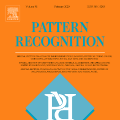计算机 | SCI期刊专刊征稿信息5条
计算机科学理论
Theoretical Computer Science
Special Issue on The 27th London Stringology Days & London Algorithmic Workshop
全文截稿: 2019-09-15
影响因子: 0.772
CCF分类: B类
中科院JCR分区:
• 大类 : 工程技术 - 4区
• 小类 : 计算机:理论方法 - 4区
网址: http://www.journals.elsevier.com/theoretical-computer-science/
We are pleased to announce"The 27th London Stringology Days & London Algorithmic Workshop (LSD & LAW) 2019"special issue for the journal ofTheoretical Computer Science.
Topics of interest include but are not limited to the following areas:
Theoretical or applied aspects of discrete algorithms.
String Algorithms.
Automata Theory.
Combinatorics on Words.
Bioinformatics.
Graph and Network Algorithms.
Computational Complexity.
计算机综合与前沿
Medical Image Analysis
Special Issue in Computational Pathology
全文截稿: 2019-12-30
影响因子: 5.356
CCF分类: C类
中科院JCR分区:
• 大类 : 医学 - 2区
• 小类 : 计算机:人工智能 - 2区
• 小类 : 计算机:跨学科应用 - 1区
• 小类 : 工程:生物医学 - 2区
• 小类 : 核医学 - 2区
网址: http://www.journals.elsevier.com/medical-image-analysis
This special issue on Computational Pathology in the journal for Medical Image Analysis (MeDIA)seeks to solicit papers in the areas of medical image analysis, artificial intelligence and machine learning as they relate to digital pathology. This seeks to showcase new ground breaking research that is both innovative and clinically relevant for digital pathology and precision medicine.
The scope of the special issue includes, but is not limited to, the following topics:
Artificial intelligence and Deep Learning for Computational Pathology
Stain normalization/standardization
Detection, classification and segmentation of tissue structures (cells, glands etc.)
Detection and discovery of predictive and prognostic tissue biomarkers
Whole-slide image analysis
Registration of whole-slide images and cross-slide registration
Immunohistochemistry scoring
Multiplexed staining
Unlabeled multiplexing
Deep machine learning and image analysis algorithms, as applied to pathology images
Detection and discovery of predictive and prognostic tissue biomarkers
Multiplexed-stain image analysis
Unlabeled multiplexing
Histology image synthesis
Crowdsourcing for ground truth collection in digital pathology
Virtual staining
Other related topics
计算机科学与技术
Simulation Modelling Practice and Theory
Special Issue on: IoT modelling and simulation in smart-anything computation at the Edge
全文截稿: 2019-12-31
影响因子: 2.092
CCF分类: 无
中科院JCR分区:
• 大类 : 工程技术 - 3区
• 小类 : 计算机:跨学科应用 - 3区
• 小类 : 计算机:软件工程 - 3区
网址: https://www.journals.elsevier.com/simulation-modelling-practice-and-theory
The Edge computing is iconic of the new computing model driven by the Internet of Things (IoT) boldly evolving and gaining the power for pervasive data processing, storage, and service supply. Although the technologies the Edge computing relies on are stable and rock-solid, one of the most critical aspects is the availability of programming models, developing tools and sandbox environments in order to design, implement and test the next generation of applications. In this scenario modelling and simulating Edge based infrastructure is crucial and, currently, no generally accepted solution is remarkably available or shared among the scientific community.
This special issue is devoted to the analysis, modelling, simulation, and application in the IoT in smart-city and industry 4.0 computation at the Edge.
Topics of interest include, but are not limited to:
Architectures for Edge Computing systems
Modelling of Edge Computing systems
Public and Private Mobile Clouds in Edge Computing
Edge Computing Applications
Simulation of Edge-based systems
Programming the Edge Computing
Functionality of Edge Computing Systems
Communication Among Edge Computing Systems
Migration Services in Edge Computing Systems
Workflows in Edge Computing
Edge Computing and Smart Cities
Edge Computing for the Industry 4.0
Simulations for Edge-based applications
Reliability in Edge Computing Systems
Security and Privacy in Edge Computing Systems
Trust in Edge Computing
Quality of Service in Edge Computing
Mission Critical Edge Computing
人工智能
Pattern Recognition
Special issue on Pattern Recognition Methods for Bridging the Vision-Language Gap in Multimodal Data Analysis
全文截稿: 2020-02-12
影响因子: 3.962
CCF分类: B类
中科院JCR分区:
• 大类 : 工程技术 - 2区
• 小类 : 计算机:人工智能 - 2区
• 小类 : 工程:电子与电气 - 2区
网址: http://www.journals.elsevier.com/pattern-recognition/
The explosive growth of visual and textual data (both on the WorldWideWeb and held in private repositories by diverse institutions and companies) has led to urgent requirements in terms of searching, processing and understanding of multimedia content, by a machine. Solutions for providing access to and understanding such multimodal source data depend on bridging the semantic gap between vision and language. To solve this problem calls for expertise from the cognate fields of computer vision, image processing, text and document analysis, machine learning and pattern recognition. This problem also finds applications in the fast-emerging areas of multimedia data analysis and cross-modality learning.
In this special issue, we aim to assemble recent advances in pattern recognition relevant to the vision-and-language problem, encompassing big-data applications involving multimedia data and deep learning algorithms. The scope of the call for papers covers the use of pattern recognition and machine learning techniques for understanding cross-modal information, especially to those involving vision-and-language. Both original research as well as state-of-the-art literature reviews, are welcome for submission. However, submitted papers must be within the scope of the Pattern Recognition Journal, advancing the available pattern recognition methodology in this domain. Papers outside the remit of the journal will be rejected without review. The list of possible topics includes, but is not limited to:
Novel pattern recognition and machine learning methods which combine language and vision
Pattern recognition and machine learning for visual captioning, dialogue, and question answering
Sequence learning towards bridging vision, language and multimedia data
Language as an inference mechanism for structuring and reasoning about visual perception
Transfer learning across multimodal data
Pattern recognition for visual synthesis from language
Semantic scene graph generation from images with pattern recognition and machine learning methods
Cross-modality pattern recognition and machine learning for representation and learning, retrieval and generation, and zero/few-shot learning.
Pattern recognition and machine learning for multimedia data analysis and understanding
人工智能
Neurocomputing
Special Issue on Deep Learning with Small Samples
全文截稿: 2020-04-15
影响因子: 3.241
CCF分类: C类
中科院JCR分区:
• 大类 : 工程技术 - 2区
• 小类 : 计算机:人工智能 - 2区
网址: http://www.journals.elsevier.com/neurocomputing/
In machine learning and computer vision fields, due to the rapid development of deep learning, recent years have witnessed breakthroughs for large-sample classification tasks. However, it remains a persistent challenge to learn a deep neural network with good generalizability from only a small number of training samples. In fact, humans can easily learn the concept of a class from a small amount of data rather than from millions of data. Moreover, many types of real-world data are small in quantity and are expensive to collect and label. Motivated by this fact, research on deep learning with small samples becomes more and more prevalent in the communities of machine learning and computer vision, for example, researches focusing on one-shot classification, few-shot classification, as well as classification with small training samples.
Recently, deep small-sample learning has achieved promising performance in certain small-sample problems, by transferring the "Knowledge" learned from other datasets containing rich labelled data or generating synthetic samples to approximate the distribution of real data. However, many challenging topics remain with small-sample deep leaning techniques, such as data augmentation, feature learning, prior construction, meta-learning, fine tuning, etc. Therefore, the goal of this special issue is to collect and publish the latest developments in various aspects of deep learning with small samples.
The list of possible topics includes, but is not limited to:
Survey/vision/review of deep learning with small samples
Data augmentation methods for small-sample leaning
Feature learning based methods small-sample leaning
Regularization technology of deep model in small-sample leaning
Ensemble learning based methods for small-sample learning
Transfer learning methods for small-sample learning
Semi-supervised learning methods for small-sample learning
Prior based methods for few-shot learning
Meta-leaning based methods for few-shot learning
Fine-tuning based methods for small-sample learning
Theoretical analysis for small-sample learning
Applications of small-sample learning on person re-identification, object recognition, etc.
广告
登录查看更多
相关内容
专知会员服务
17+阅读 · 2019年12月2日
Arxiv
59+阅读 · 2020年1月20日
Arxiv
16+阅读 · 2020年1月2日






